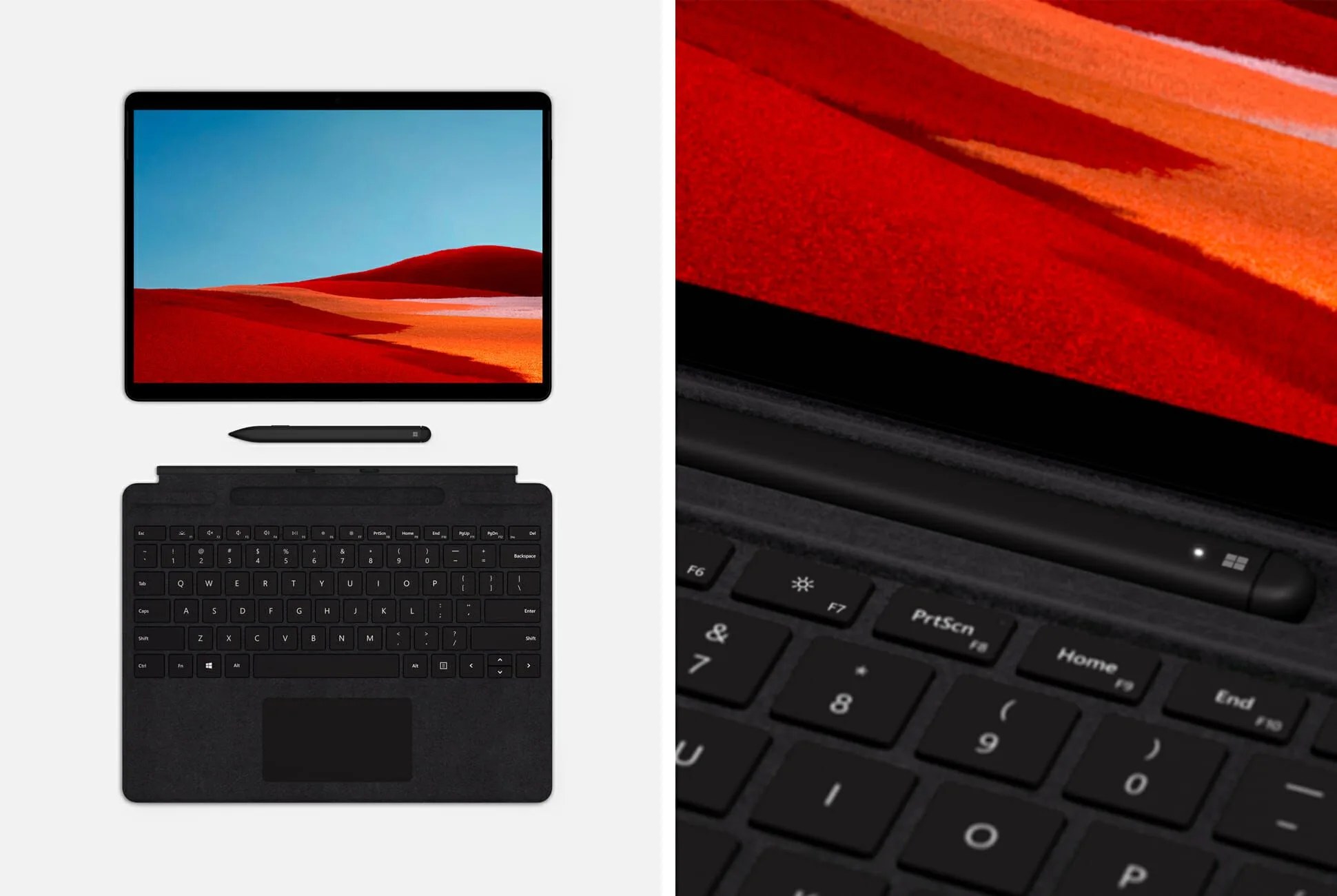For years, Microsoft and Apple have been pushing towards a similar vision of the future of computing. Microsoft, with its Surface Pro, has spent years jamming a full Windows PC into the body of a tablet, squishing it smaller and smaller year by year. Apple, with its iPad Pro, has taken its iconic tablet and given it a keyboard, a stylus, and now its own operating system to bring it closer and closer to a laptop. Now, with the new Surface Pro X, Microsoft announced its latest push towards that future. On paper, thanks to its full Windows 10 operating system, it has a strength that Apple can’t yet match. If it plays out well in practice, that is.
Unlike the its Surface Pro computers which have used traditional laptop processors, the Surface Pro X is Microsoft’s move to make its newest tablet more like Apple’s on the inside. Instead of a power-hungry laptop CPU, the Pro X sports a custom-made CPU based off Qualcomm’s Snapdragon mobile architecture. The result? The Surface Pro X is much more like a tablet than any Surface Pro that came before. It’s just over 5mm thick and weighs just 1.68 pounds. It also has fast charging, and a claimed battery life over 13 hours.
But unlike a tablet, it is not running a mobile operating system. Instead, it runs full Windows 10, which puts it on much more even footing with laptops, though with a few caveats. The Pro X’s CPU isn’t naturally compatible with various flavors of existing Windows 10 programs, and so not every program may work right out of the box, and the ones that do may suffer from the backflips the Pro X has to do in order to run them. And, of course, mobile processors just aren’t as powerful as traditional laptop CPUs, and there’s a chance that the Surface Pro X may struggle with what the average user asks of it. We’ll have to wait until reviewers and users can put it through its paces before we can find out for sure.
It’s not the first time Microsoft has tried this approach. Its Surface RT and Surface 2 (in 2012 and 2013 respectively), attempted to bring Windows to a device with a mobile CPU, but relied on a neutered and now-discontinued flavor of Windows to do it. Both Windows and computing hardware have come a long way in that time, so maybe the Pro X can make it stick.
In the meantime, Apple’s iPad Pro will continue its alternate path with the development of the new iPad OS, a half step between pure-mobile iOS and full-fledge macOS that will leaves the tablet in a place that’s more like a laptop, but explictly not one. It’s a slower transition that could pay off in the long run if the Surface Pro X has over-promised and can’t live up to expectations. But if the Surface Pro X can hack it against genuine laptops, it stands to be a hell of a device.
 Gear Patrol
Gear Patrol